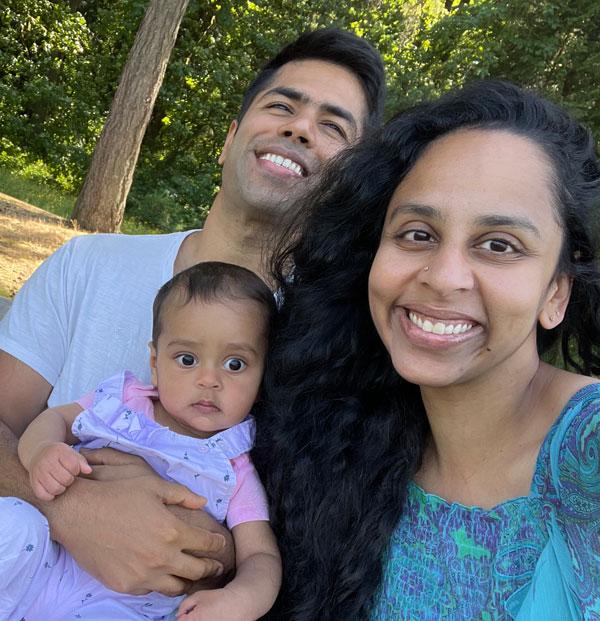
Miel Sundararajan, MD leads community outreach for Ophthalmology
Giving back to the community is an integral part of Dr. Miel Sundararajan’s mission as an ophthalmologist.
“I have always been involved in caring for the underserved and wanted to bring that here,” said Sundarajan, Assistant Professor and specialist in cornea and uveitis. “It’s exciting for me to be involved in broadening our outreach as a department.”
Dr. Sundararajan is the director of community outreach for the department. Under her leadership, trainees and staff have participated in several outreach activities over the past year.
These have included the twice-yearly Seattle-King County community clinic at Seattle Center. This four-day event includes medical and dental screenings at no cost to participants. Dr. Sundararajan was joined by residents and fellows who have gained valuable experience treating underserved populations.
In June, she was joined by Eye Institute staff to provide vision screening for participants in the Special Olympics at Pacific Lutheran University.
“The more that we do, the more people become aware of our ability to participate,” she said.
Born in Cuba, where her parents had lived for five years, Miel, which means honey in Spanish, moved to the US when she was two and was raised in South Bend, Ind. Her mother formerly taught at the Indiana University medical school and is now an emergency medicine physician.
“I always knew I wanted to be a doctor and do surgery,” she said. She completed an eight-year undergraduate and medical school program with Rice and Baylor, followed by residency in New York and fellowships in cornea and uveitis at the University of California San Francisco.
She decided on ophthalmology because of the diagnostics involved and the surgical element combined.
“What's exciting about cornea is that there is so much to be done to restore vision; my particular interest is in corneal transplant,” she said. “The technology has advanced to the point where we can transplant just a thin layer of membrane to be successful, and it is exciting to be in the forefront of that,” Dr. Sundararajan said. “Medical cornea allows us to look at several conditions, including corneal ulcers; there is also overlap with uveitis and scarring disorders, and the multidisciplinary aspects are very compelling to me. The UW is uniquely positioned in cornea and uveitis with our large catchment area.”
In her research, Dr. Sundararajan has worked closely with Dr. Russell Van Gelder, MD, PhD, Bucey Professor and Chair, using his work in genetic sequencing of pathogens and applying that to corneal ulcers. This work aims to identify a pathogen from the corneal ulcer in a matter of hours and to choose the proper medication.
Last fall Dr. Sundararajan and her husband, Abhishek, welcomed a daughter, Ayanta. She enjoys reading and exploring the outdoors in her spare time.
